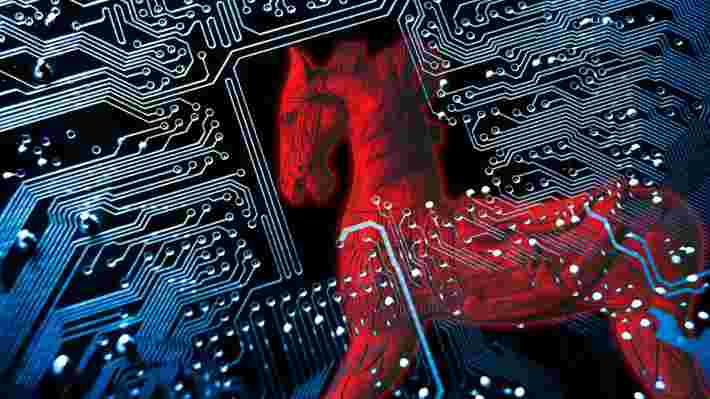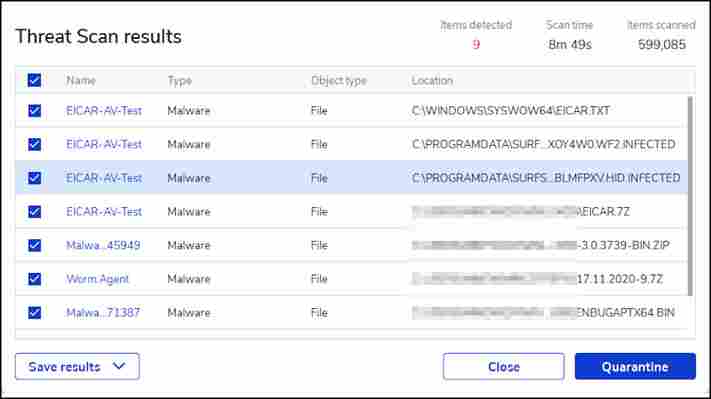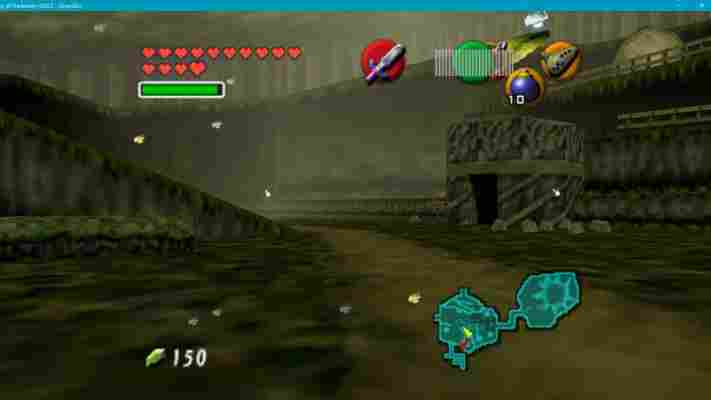At the beginning of the season, Chelsea fans would have looked at this Carabao Cup semi-final with auld enemy Tottenham and licked their lips but the scales of football form and fortune have balanced somewhat of late. The Blues have hit a frustrating run of draws while Conte's Spurs might just have found their wings. Make sure you know how to watch a Chelsea vs Tottenham live stream wherever you are.
While covid may have cancelled the other of this week's Carabao semis, Chelsea and Spurs are ready to go head to head at Stamford Bridge in part one of a tie that's set to explode. Tottenham boss Conte has said it will be an emotional return to the club where he won a league title and an FA Cup but he'll be the only one on the team bus that gets anything like a warm welcome from the home crowd.
Chelsea striker Romelu Lukaku starts after a slap on the wrist regarding comments in an interview where he suggested that he was not happy at the club. Timo Werner makes the bench after a few weeks out. Havertz and Ziyech start instead.
Spurs start with the right-footed Doherty at left wing-back. Here's how to watch a Chelsea vs Tottenham live stream wherever you are.
How to watch Chelsea vs Tottenham from outside your country
We've set out below all the ways you can watch Chelsea vs Tottenham in a number of countries around the world. However, if you're away travelling for work or pleasure, you probably won't be able to tune in like you normally would at home.
That's because of the pesky digital restriction that is geo-blocking, which prevents certain streaming services from being used outside a specific area.
Help is at hand however if you run into this issue with the option of using a VPN to tune to your preferred coverage no matter where you are in the world.
Use a VPN to stream Chelsea vs Tottenham from anywhere

How to watch the Chelsea vs Tottenham live stream in the UK

How to live stream Chelsea vs Tottenham in the US

How to watch a Chelsea vs Tottenham live stream in Canada
How to watch Chelsea vs Tottenham in Australia
How to watch a Chelsea vs Tottenham live stream in New Zealand
6 types of Windows malware to watch out for - and how to remove them
Windows is the most prevalent desktop operating system in the world, and therefore PCs running Microsoft’s OS are most often targeted by cybercriminals and their various strains of malware.
While desktop users on other platforms shouldn’t be complacent – even though that might be tempting with less commonly used and more locked-down OS alternatives – it’s true enough to say that those running Windows certainly need to consider security as a priority.
With that in mind, in this article we’re going to look at the most common types of malware which could possibly strike a Windows 10 or 11 system, discussing what they are, how they work and what they might do to any PC that’s unfortunate enough to be infected. Then to conclude, we’ll look at the tools you can use to detect and purge these various intruders, like malware removal software and antivirus and how to go about that process.
1. Viruses/Malware
The term ‘virus’ is quite often employed in a general sense to denote anything malicious which has infected a computer, but really, the umbrella term for that is actually ‘ malware ’. A virus is a specific type of malware, and in fact it’s the oldest family of malicious software around.
A computer virus, much like a biological one, exists with the aim of spreading itself. It hides in a file (like the EXE for an app, or a Word document), and infects the system when that file is opened, triggering the payload (the nasty things done to your machine, which vary widely).
The key element here is that it then tries to spread itself to other files, and should those files off your machine reach another PC, it then infects that (when the file is run), spreads again, and so the cycle continues.
2. Worms
A worm is much like a virus, and spreads itself in the same way, but with a key and very dangerous difference.
Worms directly attack and infect the system they come into contact with. In other words, you don’t have to open a file to trigger the infection; it happens with no interaction from the user required. In this case, there’s no chance to even, say, get suspicious about a Word document’s title and origin, and decide to leave it well alone – the infection just happens.

3. Trojans
You’re surely familiar with the myth of the Trojan Horse, and the name of this kind of malware is a direct reference to the fact that it pretends to be a legitimate app or file. Most commonly, it’ll be a fake program that you might download thinking it’s the genuine article – maybe from an authentic-looking website – but when you run it, your machine will become infected (unlike a virus, though, it won’t attempt to spread itself).
There are various ways in which a Trojan can be destructive, for example, opening a backdoor on your system to allow the malware author access to do what they want, or it might sit on your PC and steal your passwords .
4. Adware
Adware is one of the less vicious subcategories of malware, in that it won’t engage in something really nasty like nuking your data. Rather, it just serves up adverts as the name suggests (note that it could, however, track you online and targets ads too).
So, it’s more annoying as opposed to actively destructive, but clearly, it’s still not something you want hanging around on your Windows PC. Particularly not when in some cases it can result in a veritable avalanche of pop-up ads assaulting your desktop – which really isn’t pleasant and could hamper the performance of your Windows laptop or PC.

5. Spyware
Again, this is a type of malware named after what it does – namely sit quietly in your system, spying on you, stealthily gathering data. The information harvested is transmitted to the malicious actor behind the spyware, and then bent to whatever dark purpose they have in mind.
It’s similar to adware, and it’s not outright destructive – the whole idea is that you never realize its presence, of course – and adware is generally considered a subcategory of spyware.
However, where spyware is different is that it poses more of a threat than adware, and a potentially major danger to your personal data and security. It could possibly be collecting info such as the passwords for your online accounts, for instance.
6. Ransomware
Ransomware is one of the nastiest kinds of malware, one which effectively takes over your machine.
If it infects a PC – like most malware, it may be hidden in a file perhaps emailed to you, or picked up via a dodgy web link – it systematically goes through your files and encrypts them (or at least some of the more critical ones). It then demands a ransom to be paid for the key to decrypt that data. Essentially, it locks away files so you can’t get to them, and threatens to throw away the key unless you pay up, usually in Bitcoin or an alternative cryptocurrency.
Of course, even if you do pay up, there’s no guarantee that the malicious party behind the scam will free your files from their encrypted chains. You are trusting an inherently untrustworthy third-party that this will actually happen.

How to remove malware from your Windows PC
Let’s say the unfortunate happens and you get infected by one of the above threats. You may be certain of an infection, or you might just suspect it. In the latter case, perhaps your computer is suddenly behaving oddly, running really slowly, or popping up random messages at you that don't make sense.
The first question to ask is: are you running an antivirus app? Remember, Windows has its own Microsoft Defender built-in, so you don’t have to install a third-party app if you don’t want to. Assuming you are running an antivirus, if you’re not sure – but suspect – that malware is present, run a manual scan (the option to do a ‘full scan’ should be easily accessible from the app’s main menu). This scan should pinpoint anything malicious, and then deal with the offending party automatically.
If you are certain you’ve been infected, and you’re running an antivirus already, this shows that these apps aren’t always totally bulletproof. It’s at this point you may want to ask yourself whether you’re running one of the best Windows antivirus apps , with a more accurate antivirus engine? If not, then switch over to one of these top-rated products to get better protection and run a scan.
If your antivirus doesn’t find anything, then you can enlist another line of defense: anti-malware (or, if you don’t have an antivirus, and don’t want to install one at all, you can skip straight to this step). Our recommendation as the top pick in this case is Malwarebytes . Once installed, start the app and click on ‘Scan’ to initiate the scanning process. If the apps finds a threat, it’ll deal with the malware (the software may also flag up potentially suspicious programs that you may or may not wish to get rid of). We have a full tutorial giving step-by-step instructions on how to clean up your Windows PC with an anti-malware tool .
In short, the combination of an antivirus and/or anti-malware should hunt out and destroy any malware present.
As a final note, there may be especially problematic malware, and here we’re mainly thinking of ransomware, which is a particularly thorny type of infection. In some cases, you might be locked out of your PC, or need specialist help, although don’t forget there are ransomware decryption tools out there from major security vendors that could help - you could check out Kaspersky and Avast’s resources for starters.
Legend of Zelda: Ocarina of Time is coming to PC in a fan-made port
A fan-made PC port of the classic Nintendo 64 game The Legend of Zelda: Ocarina of Time has almost finished development and is expected to release by mid-February.
The fully functioning PC port comes from Harbour Masters, a group of community developers who say the game is approximately 90% complete (thanks, VGC ). They expect to launch its first iteration by the middle of next month, before ironing out any creases for a full release in early April.
As well as bringing Ocarina of Time to PC, the project will let you play the game at multiple resolutions, including widescreen support, run at 60+ FPS, and include a scripting system that supports additional mods, opening the door to future texture packs and more assets.
“Currently all of the game logic runs pretty much flawlessly”, one of the project’s lead developers, Kenix, told VGC. “We have a few assets that aren’t packed correctly in the archive, most specifically skyboxes, and there are still a few graphical errors we are working through. Audio is also not yet decompiled.”
“I’d give it approximately 90%. We’ve been hoping to be complete by the middle of February and use a month or so until April 1st to refine the game before release. We’re hoping to have a public repository available in late February.”
To get around Nintendo’s lawyers, the developers have been careful not to use any of Ocarina of Time’s original, copyrighted assets or code. Instead, the game’s source code has been reverse-engineered and rebuilt from scratch to avoid replicating Nintendo’s property. The developers hope this will clear them from copyright infringement.
“We packed assets into an external archive”, one of the project’s lead developers, Kenix, told VGC. “No assets are linked into the [executable file]. Our belief is that this will prevent a DMCA takedown from Nintendo.”
Given this workaround, players will need to source Ocarina’s original assets themselves. That’ll involve ripping the assets from a ROM of the game and dumping them into the same directory as the PC port.
The team isn’t stopping at Ocarina of Time, however. The Zelda Reverse Engineering Team , the group who first reverse-engineered the game’s code, is currently decompiling Majora's Mask, preparing it for Harbour Masters to port PC next.
Analysis: wait with bated breath

The developers of the port appear to have taken serious efforts to keep everything above board and avoid being slapped with a copyright infringement notice. But legal wranglings, especially over the copyright of video games, are never clear and the possibility remains that Nintendo won’t take kindly to the group’s efforts.
Take-Two, the parent company of Grand Theft Auto publisher Rockstar, last year announced it was suing a group of modders who decompiled Grand Theft Auto 3 and Vice City. That group reverse-engineered and rebuilt the games in a very similar way to how Harbour Masters are approaching Ocarina of Time.
Similarly, Nintendo has already shown they’re wary of community recreations of its classic titles. In 2020, the company took action against a fan-made PC port of Super Mario 64 , citing its unlawful use of copyrighted material, assets, and fictional depictions.
When it comes to Ocarina of Time, a dollop of hesitant optimism is probably best. If Harbour Masters can navigate the complex and onerous world of copyright infringements, they’ll bring what is widely considered not only one of the best Zelda games to PC, but one of the best video games of all time. Nintendo Switch players can grab it from the Nintendo store easily enough, but PC gamers have been left waiting for the past 24 years.